Italy’s football renaissance under Luciano Spalletti has captured the attention of fans and analysts alike. Known for his tactical understanding and innovative strategies, Spalletti has revitalized the Italian national team, bringing a fresh approach to their gameplay. This article delves into a comprehensive tactical analysis of Spalletti’s Italy, exploring the key formations, player roles, and strategic maneuvers that define their style. Join us as we unravel the tactical brilliance behind Italy’s resurgence and the mastermind steering their success on the international stage.
Build-up
Low Build-up
In the low build-up, Spalletti usually sets his team up in a 1-4-2-3-1 formation, with a number-ten positioned slightly to the right and a left-winger that comes inside.
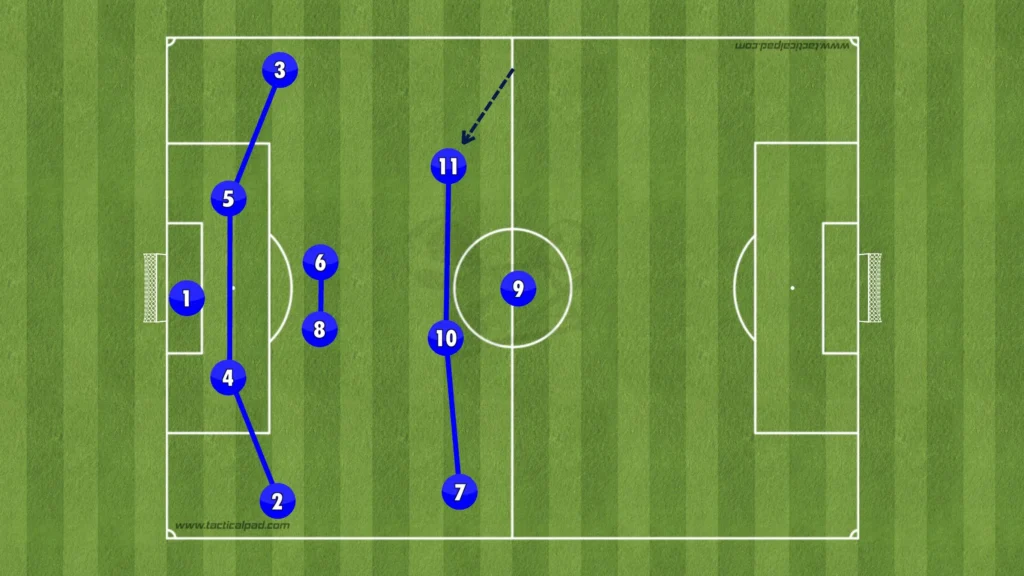
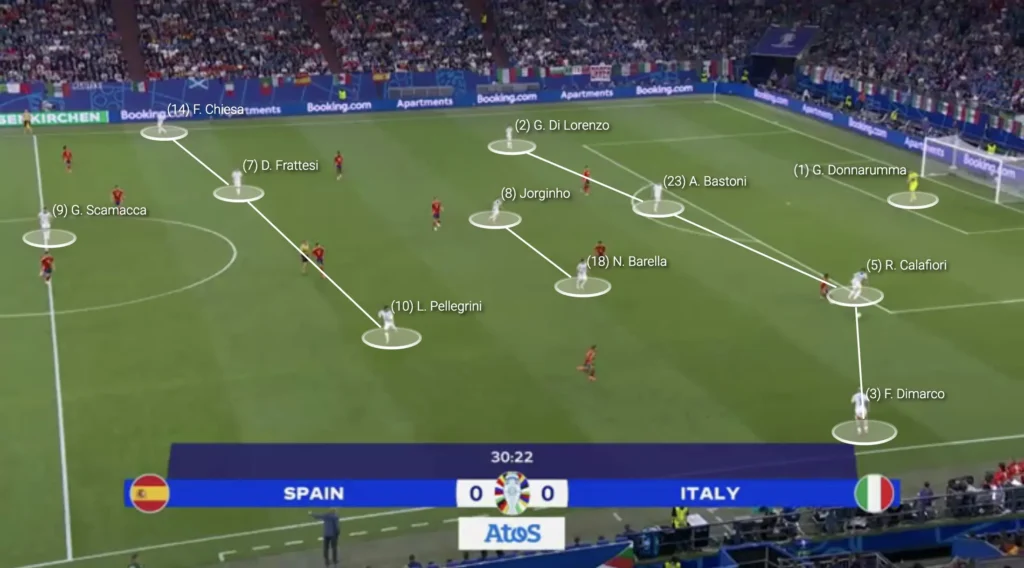
Spalletti has also used a 1-4-3-3 formation in the low build-up, with a number-six and two number-eights instead of two holding midfielders and one number-ten.
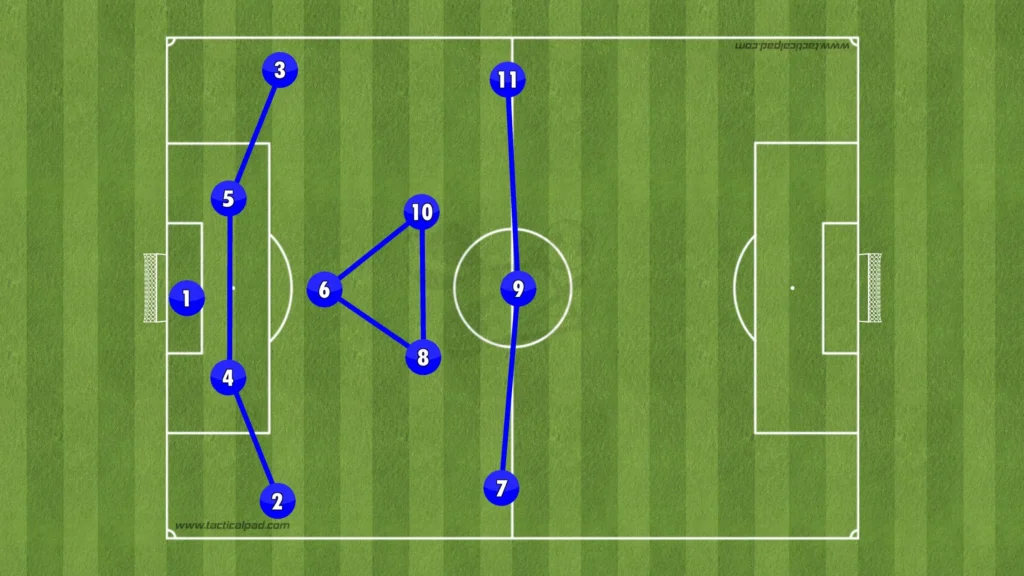
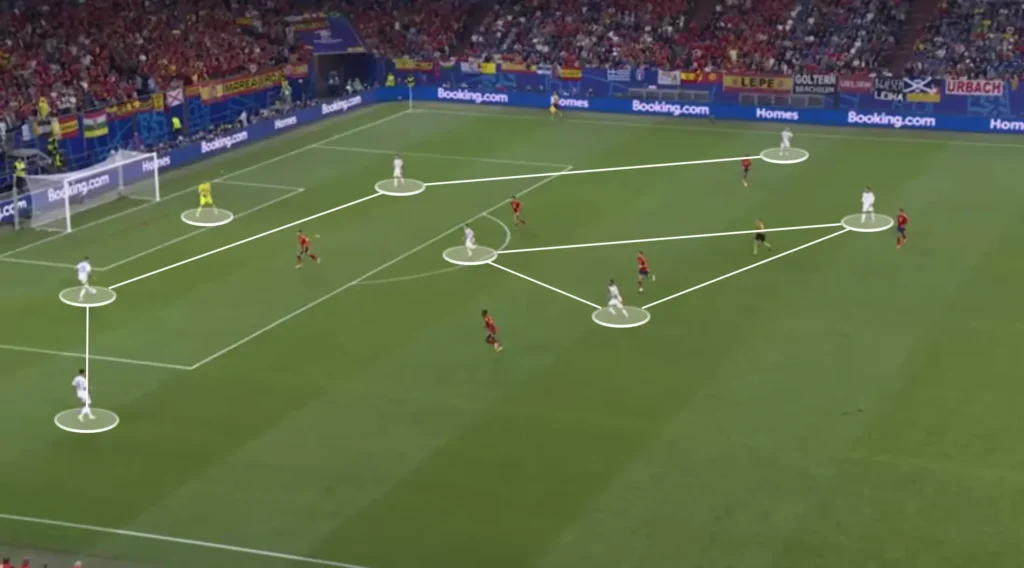
Regardless of the formation, the midfielders and wingers often drop down low during the low build-up. This allows Italy to create numerical advantages, giving the players more passing options and a higher chance of beating the opposition’s press.
High Build-up
In the high build-up, Spalletti changes the formation to a 1-3-2-5 formation, with a back three, two holding midfielders, and five up front.
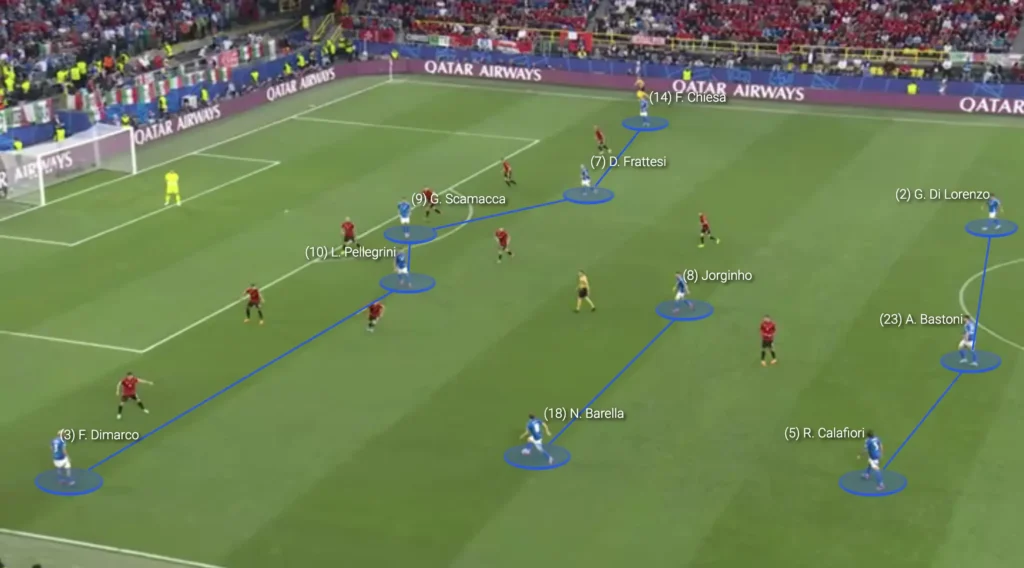
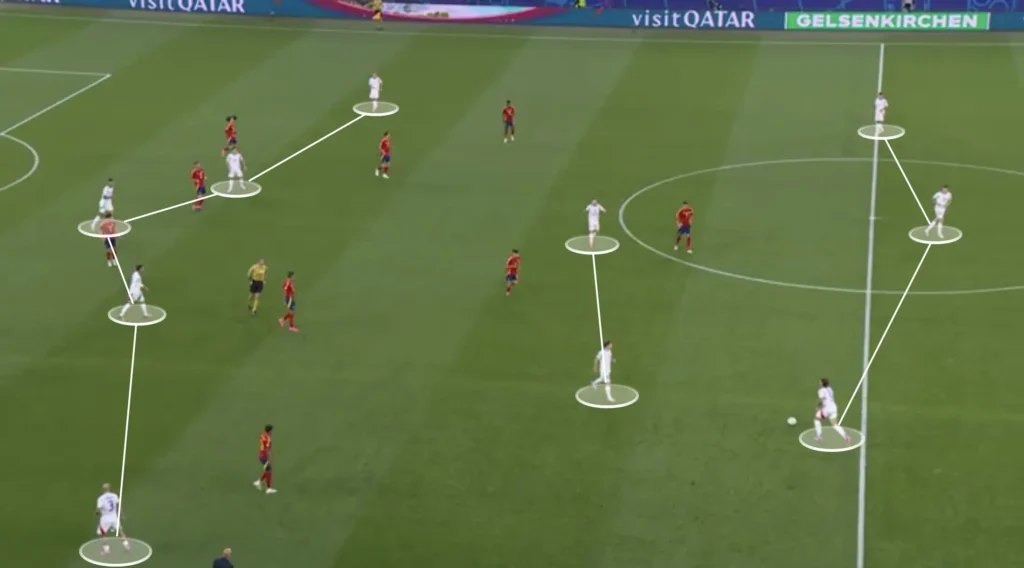
Having four central midfielders(two holding and two attacking) creates more options in the center and less space between the players. Spalletti likes this because he prioritizes playing through the middle. He needs one player high and wide to pull apart the backline while the rest create numerical advantages in the midfield areas. This builds good conditions in defensive transitions, allowing more players to press when they lose the ball. Another purpose for keeping many players in the middle is to shorten the distance between them. This shortens the length of the passes, which naturally shortens the time between passes. This means the opposition players will have less time to push up and press, giving the Italy players more time and control.
Because of the numerical superiority in the midfield, the opposition midfielders have to leave one or two of Italy’s midfielders open. Here, the Spanish central midfielder is in a 1v2 situation against Italy’s holding midfielder and attacking midfielder.
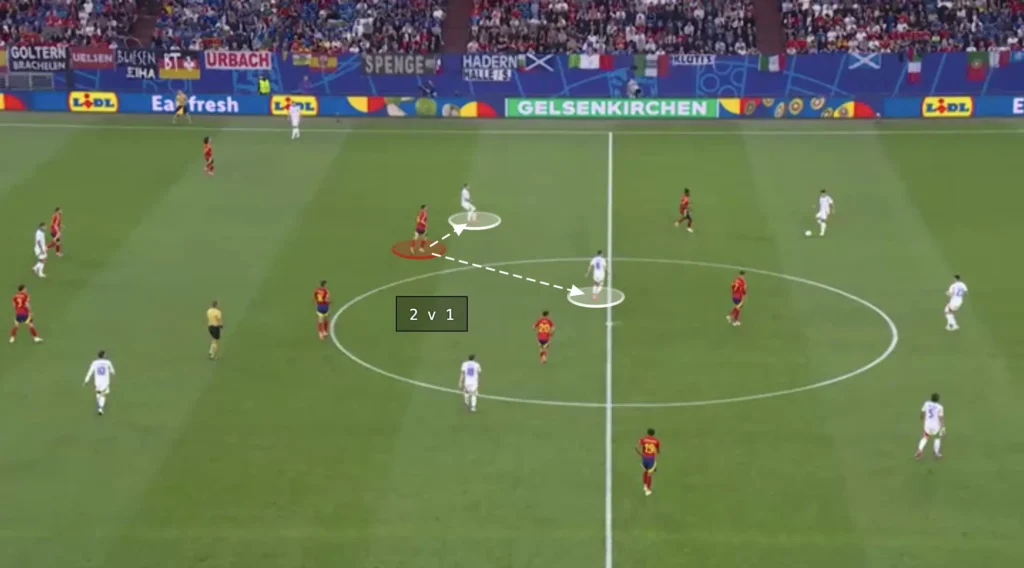
If he pushes up on the holding midfielder, the ball can be played to the attacking midfielder, using a simple third-man combination.
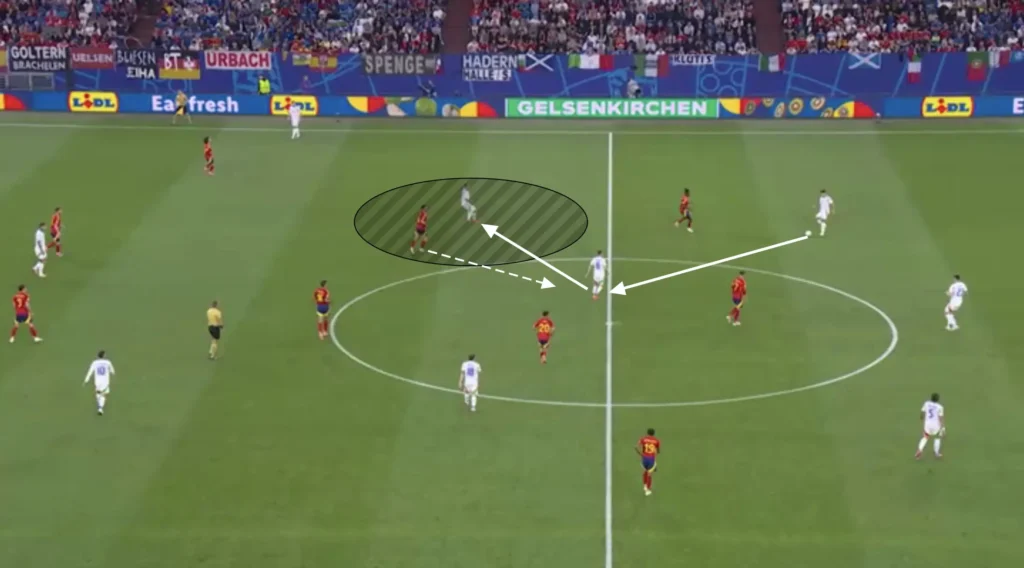
However, if he covers the attacking midfielder, the holding midfielder will have the time and space to receive the ball, turn, and take it up the pitch.
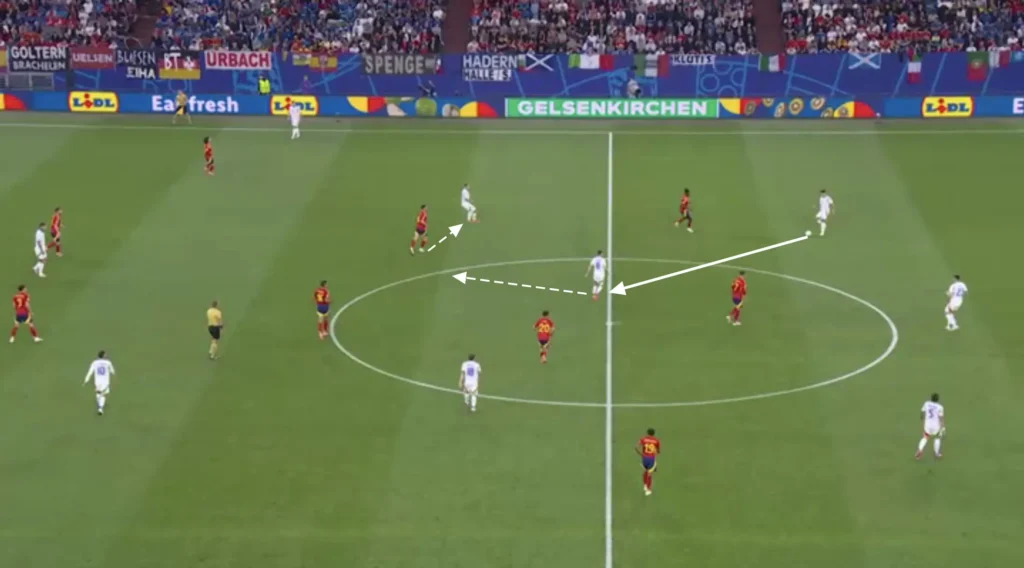
High Backline
A massive aspect of Spalletti’s high possession build-up is they keep a high backline. This helps in the counterpress because they get closer to the center. Having more players close to the center who can win the ball back makes it difficult for the opposition to do anything when they win possession. Furthermore, the high backline shortens the distance between players, shortening the time and length of the passes and preventing the opposition from pushing up their defense.
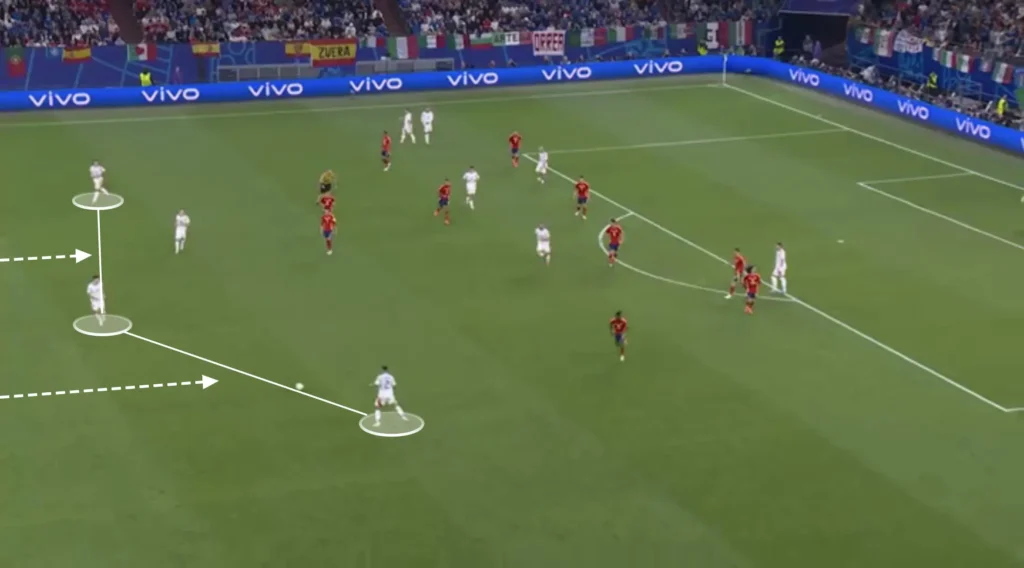
Follow the Pressure
A tool that the Italian players use to play past the opposition is following the pressure of opposition players. This means running into the space that a pressing player is leaving behind. The space that opens is often the one behind the pressing winger, who pushes up on the center-back. The attacking midfielder runs into that space, receiving the ball, turning, and progressing the ball up the pitch.
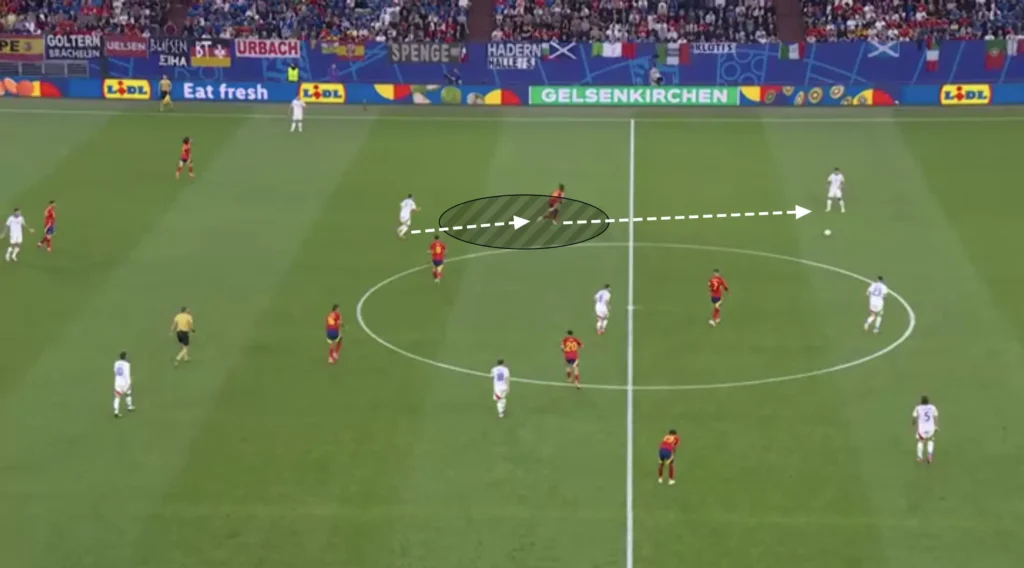
Italy will find the attacking midfielder with third-man combinations involving the holding midfielders or the wingers.
Counter-Movements
Italy also use counter-movements to create space in the build-up. The winger will, for example, often make a run toward the ball when the wide center-back gets the ball. An opposition fullback usually follows the dropping winger, which opens the space behind the fullback. The Italian attacking midfielder runs into the open space, receives a long ball from the wide center-back, and takes it past the opposition backline, looking to create a crossing opportunity.
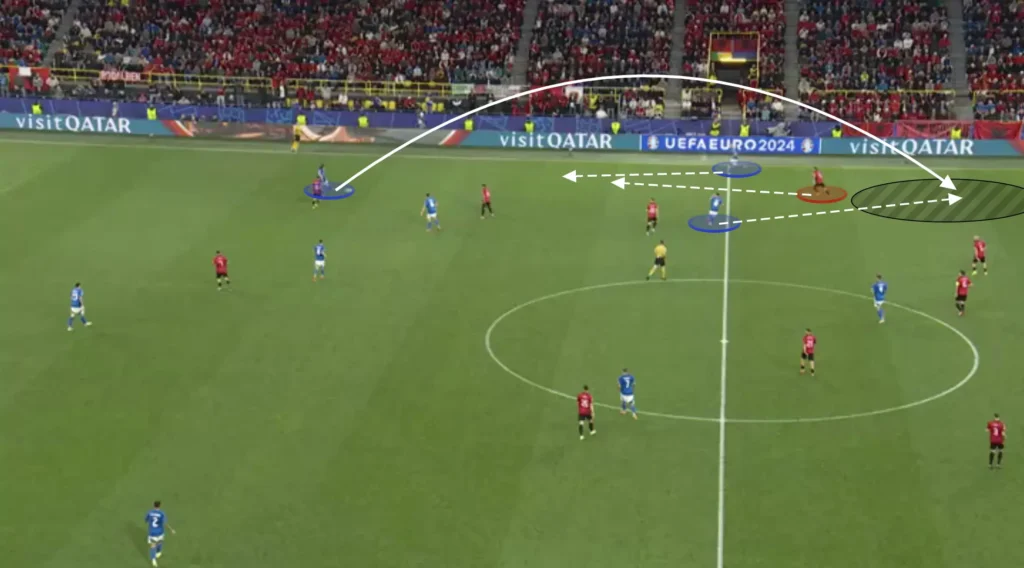
Numerical Advantages
Another massive aspect of Italy’s high build-up is their ability to create numerical advantages against the opposition’s defensive line. Their front five naturally becomes numerically superior against a back four, which they are great at taking advantage of.
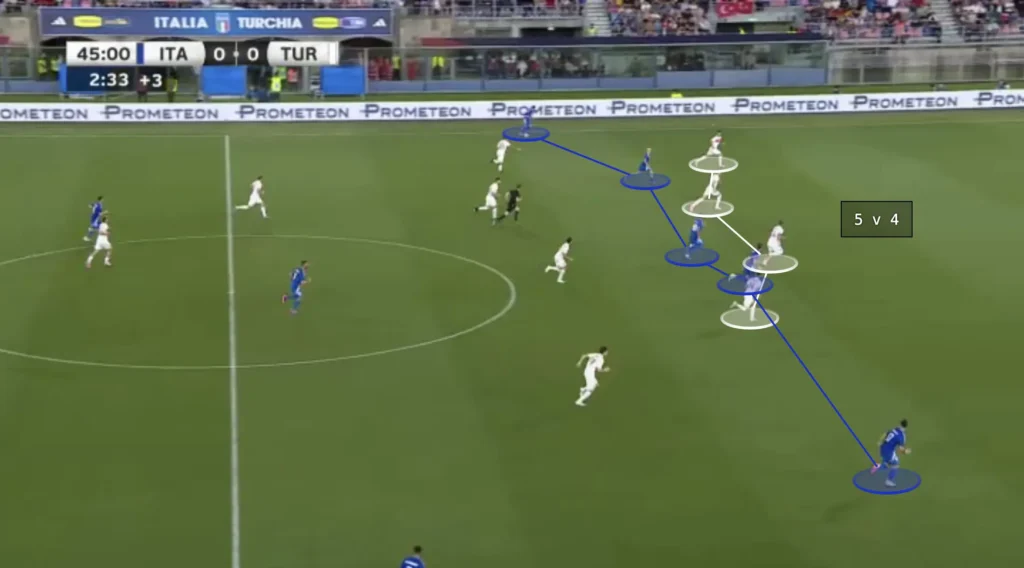
They mainly exploit this by creating 2v1 situations against the opposition fullback. When the defending team is positioned on one side, the weak-side fullback becomes vulnerable to the long switch of play due to the 1v2 against Italy’s winger and attacking midfielder. The attacking midfielder will make a run in behind, the fullback will follow that run, and the space for the winger out wide will be opened. Spalletti’s team often capitalizes on this by getting the ball to the winger and creating many opportunities from 2v1 situations on the wing and in the half-spaces.
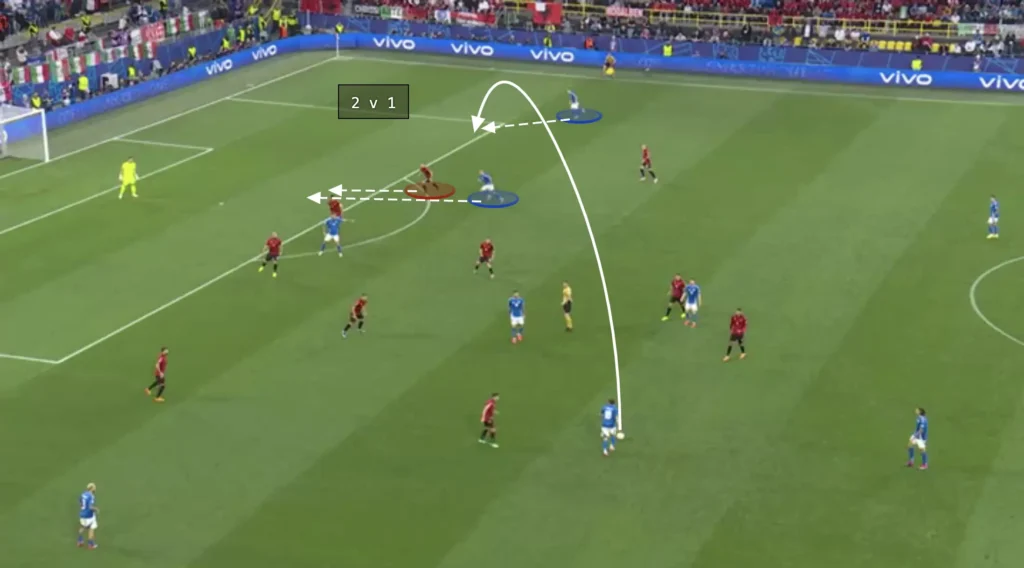
Final Thrid
Attacking the Half-Space
Spalletti’s teams usually look to create chances by attacking the space between the opposition center-back and fullback. They primarily do this from the wide areas with underlaps from the attacking midfielders or sometimes the wide center-backs. When the winger receives the ball he will attract the opposition fullback. This opens the space between the fullback and the center-back, which allows the Italian attacking midfielder or wide center-back to make the underlapping run into this space. The ball can be played to the underlapping player, who can cross the ball into the box or attack his defender in a 1v1 situation.
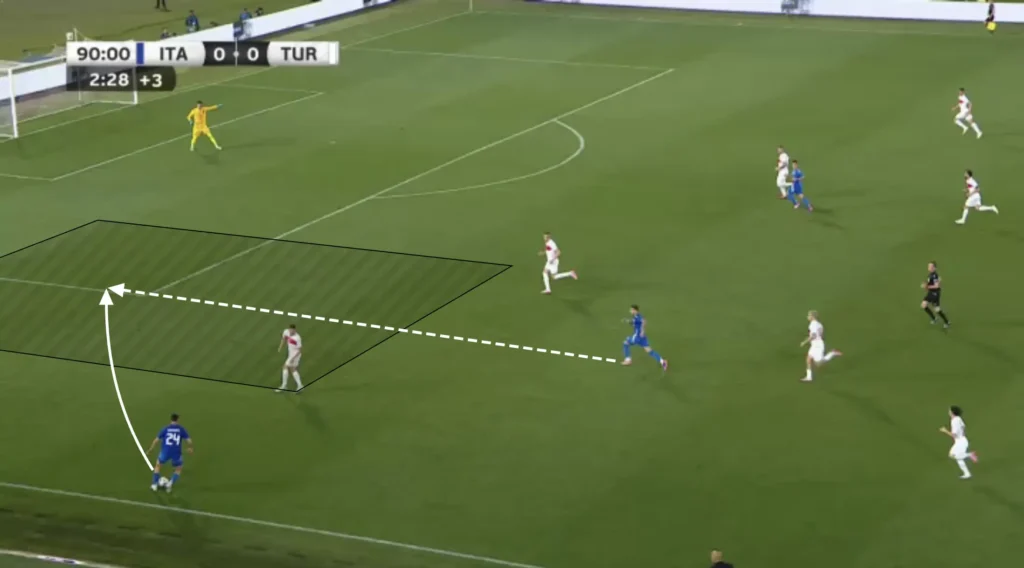
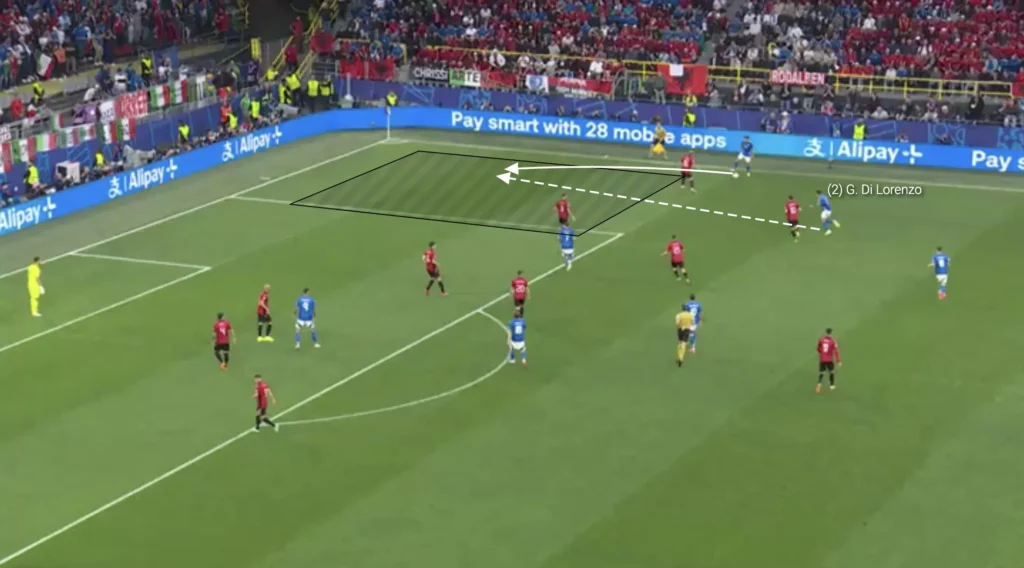
The winger does not have to play the ball to the underlapping player. The underlapping player will often drag away a defensive midfielder, which opens the space inside. The winger can take the ball inside and shoot or find a pass to a free player in front of the backline.
Many Players in the Box
The attacking midfielders and wingers look to make runs into the box when the ball is in the final third, often getting four or five players into these areas to create overloads. The numerical advantages in the box force the defending team to make decisions and leave some players open.
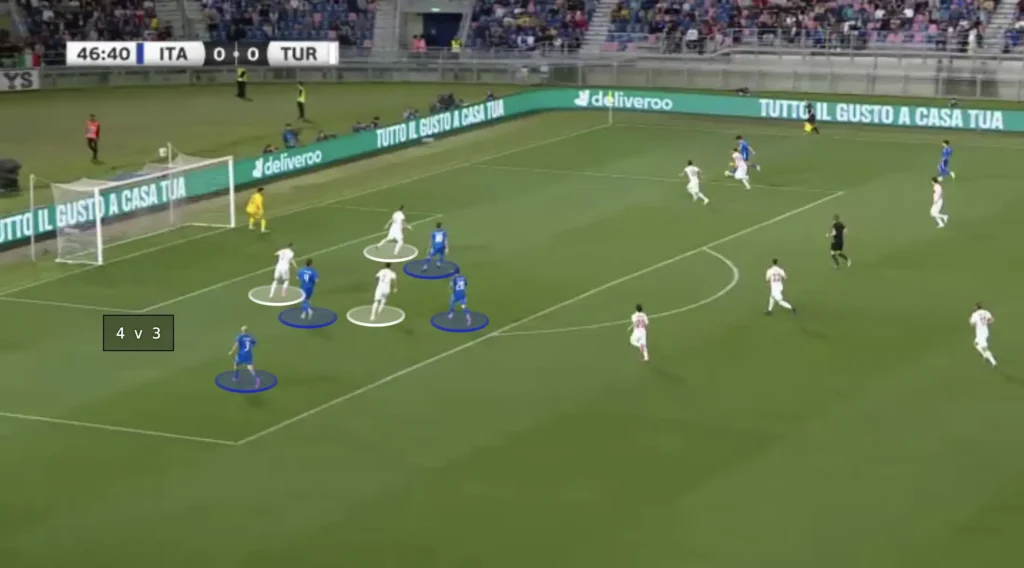
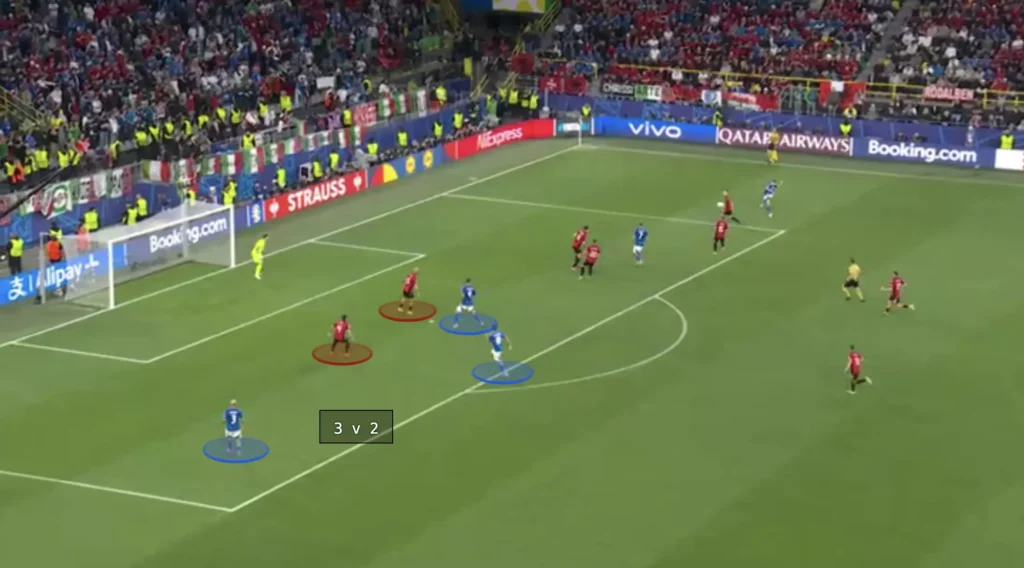
Spalletti also positions many players outside the box, ready for the second balls and cut-backs. They always succeed in pushing down the opposition’s defense, which opens the space in front of the backline. The midfielders will often be found in these spaces with cut-backs, and from there, they can shoot or combine with an attacker
Defending
High Press
Spalletti places much value on being aggressive without the ball. This shows in Italy’s high pressure. Spalletti usually wants his team to go man-to-man and intensely press the opposition. Each player is assigned a direct opponent to mark tightly, ensuring no easy passing options are available. This intense pressure forces the opposing team into hurried decisions, often resulting in turnovers in dangerous areas. The Italian players maintain high energy levels and discipline, coordinating their movements to cut off passing lanes and isolate the ball carrier. This aggressive press disrupts the opposition’s offensive rhythm and provides numerous opportunities to regain possession high up the pitch, enabling quick transitions and attacking plays. Italy almost use their high press as an attacking threat, scoring many goals from winning the ball in dangerous areas.
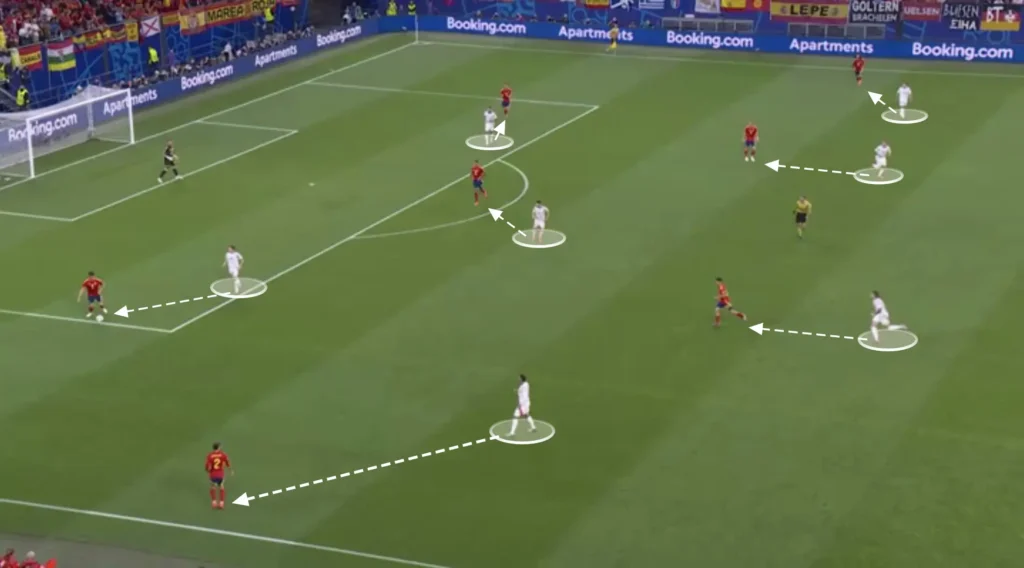
In a man-to-man system, it becomes crucial that the players know when to mark the opponent they are responsible for and when not to. If an opponent, for example, is very far from the ball, the Italian player marking him does not need to be as close to him. He can instead come in and help create numerical superiorities in the center, decreasing the risk of dangerous 1v1 situations. The Italy players will always have an opposition player they are responsible for, however, they will never be closer to them than they need to be.
Here, the two Italian midfielders man-marking the opposition midfielders drop back. They see that the opposition center-back is playing a long ball, which means the holding midfielders will not get the ball, making them irrelevant. They drop back instead, which puts them in a better position to win the second ball.
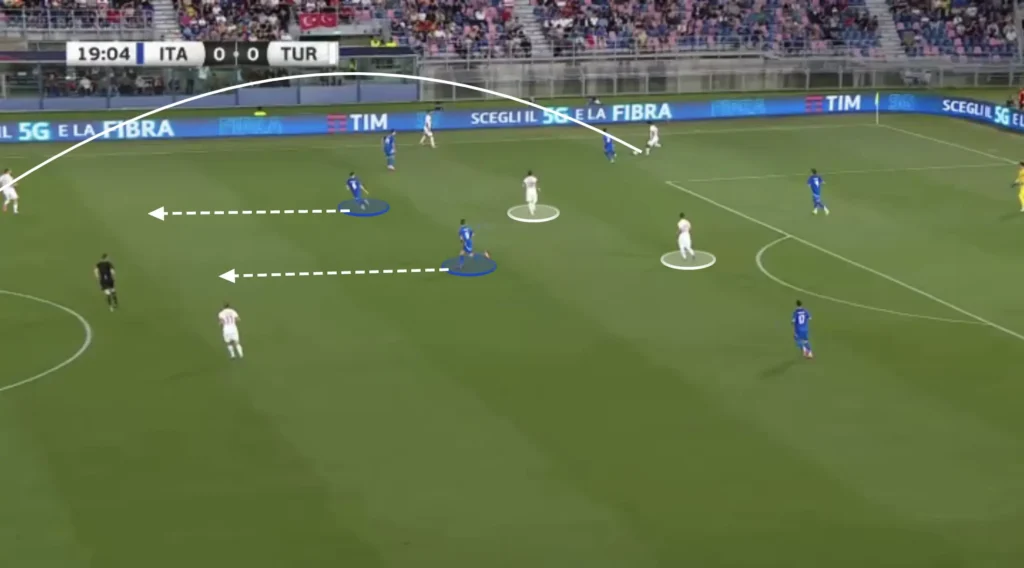
Low Press
Spalletti’s Italy uses a 1-4-5-1 formation in the low press. They look to set up in a mid-block, always trying to close the center, forcing the opposition out wide. Italy try to stay compact without dropping too low, mainly closing the space between the midfield and backline.
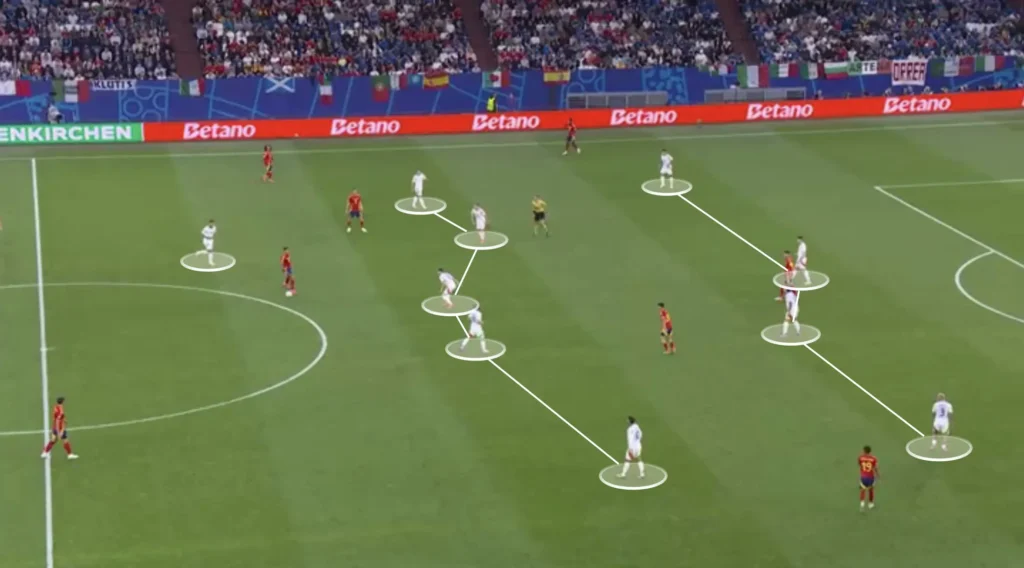
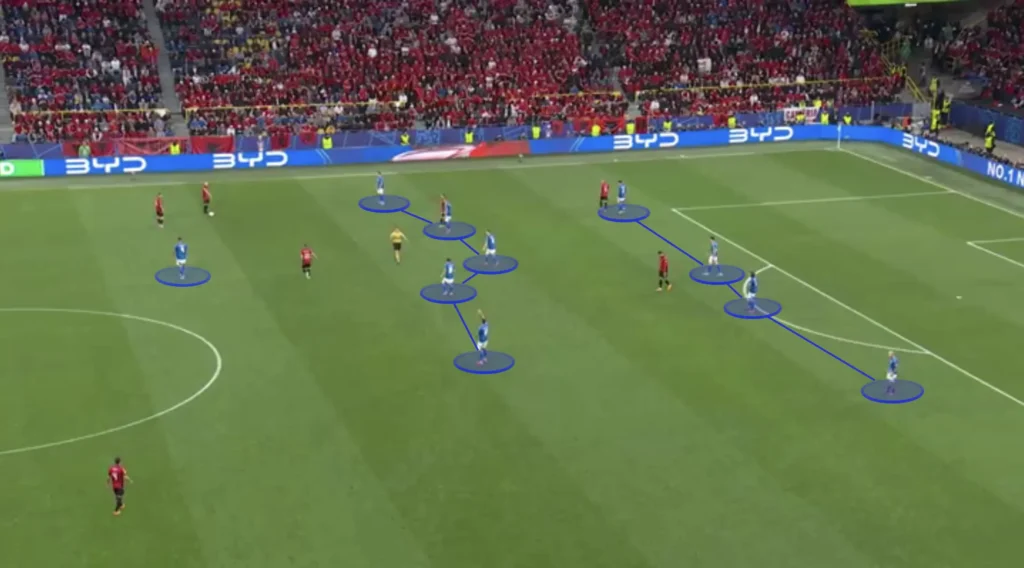
Spalletti always wants his team to squeeze the pitch when defending. This means constantly pushing the team up as much as possible. Every time the opponent plays a slow, sideways pass or a back pass, Italy’s first line of pressure pushes up, with the rest of the team following to stay compact. When the next pass comes, they push up even more, forcing the opponent back even more. They do this because it pushes the opponent further away from the Italian goal, making it harder to create chances.
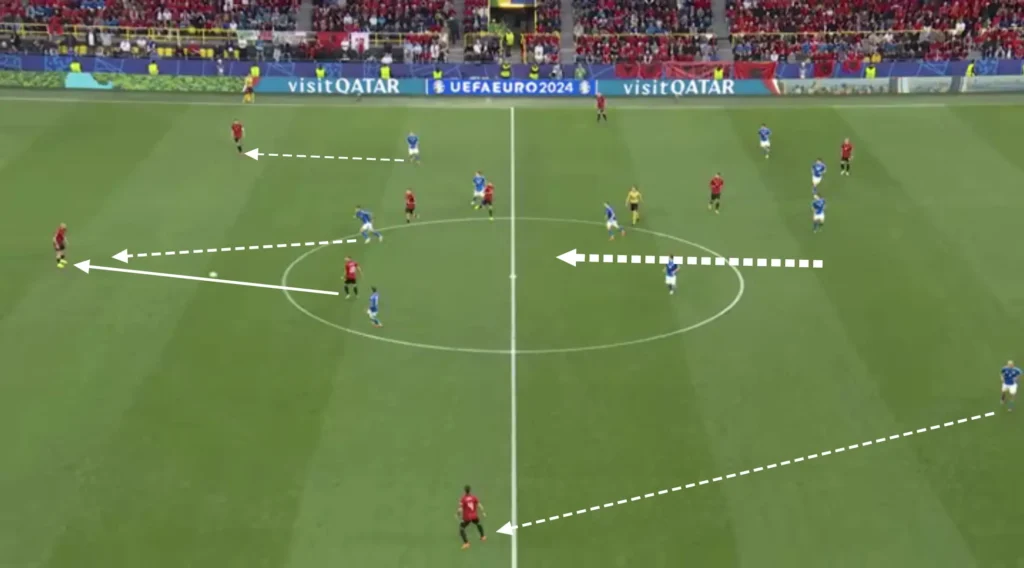
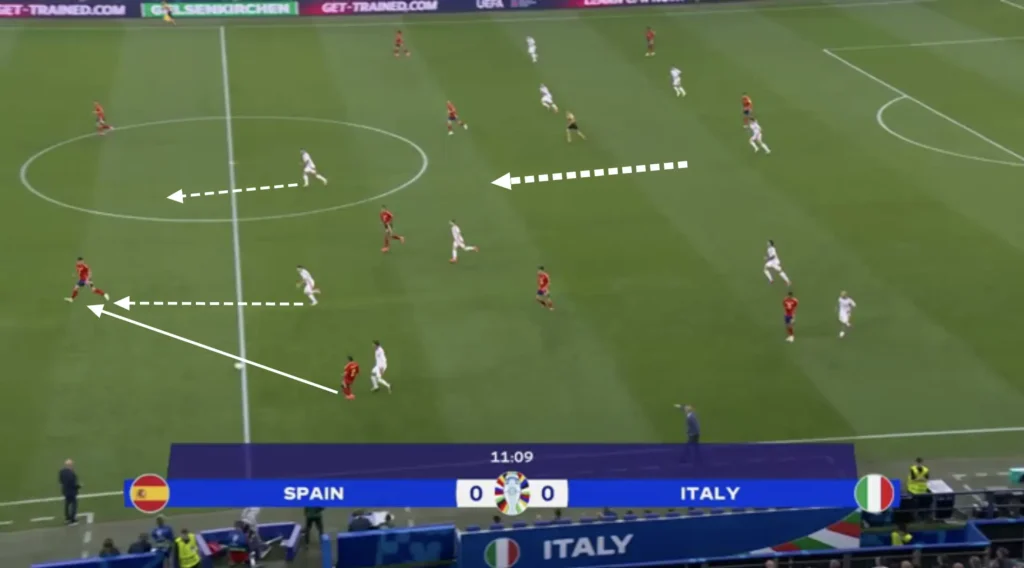
Only defending with one striker means that the opposition will be in a numerical advantage with the center-backs against Italy’s first line of pressure. If the striker presses one of the center-backs, the ball can be passed to the other one, who can take it forward. To stop the opposition center-backs from taking the ball forward, an Italian midfielder, usually Barella, has to push up and break out of the line. This opens space in the midfield for the opposition to exploit. What the Italian players do well is closing this space. The midfielders will come in behind Barella and the center-back, Calafiori, will push up on any open midfielders trying to receive the ball in this space.
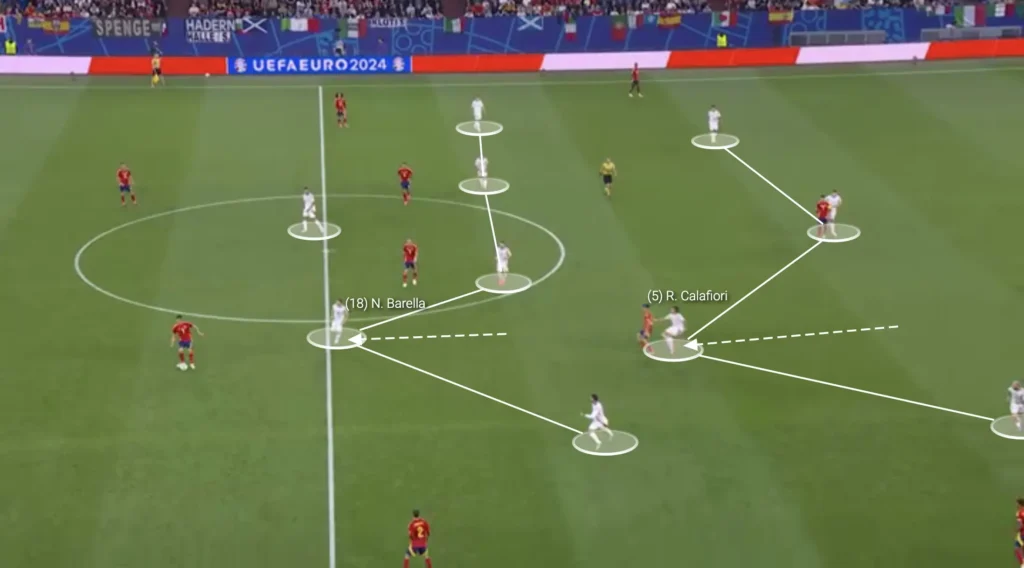
Defensive Transitions
Positioning many players centrally, creating a numerical advantage in the midfield, creates good conditions in defensive transitions. Many players close to the ball after losing possession means that many players can work towards regaining possession. Spalletti’s players are also very aggressive in the first seconds after losing the ball. The four or five players closest will immediately jump on the opposition player with the ball and close the distance to cut off any passing lanes. Spalletti’s team, therefore, often regains possession directly after losing it.
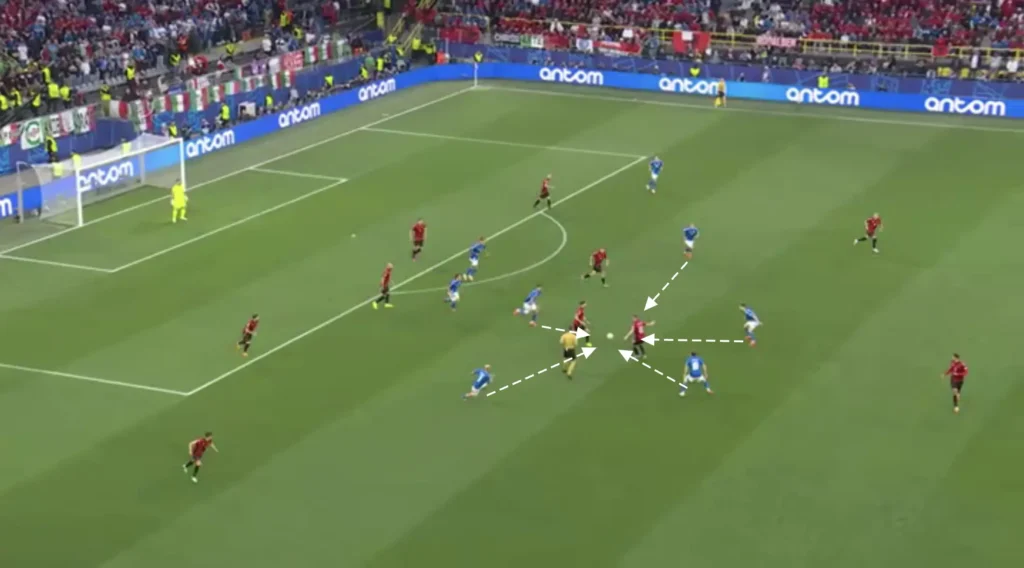
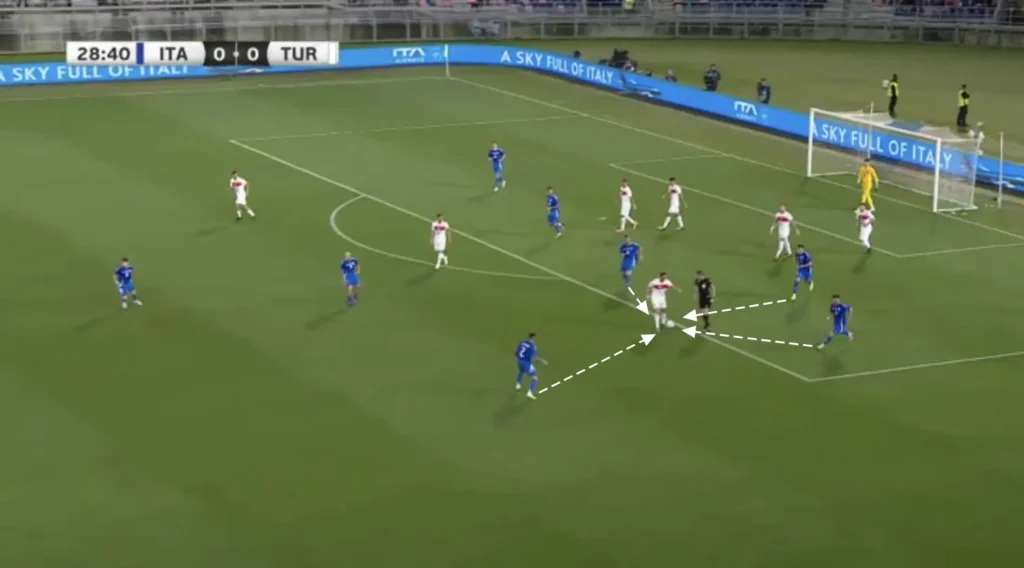
Final Thoughts
In conclusion, this tactical analysis of Italy under Luciano Spalletti highlights the strategic depth and innovation brought by the experienced manager. Spalletti’s approach, characterized by fluid formations, disciplined defending, and dynamic attacking play, has rejuvenated the Italian national team. His emphasis on possession, pressing, and adaptability has made Italy a formidable opponent on the international stage and an exciting team to watch.
Spalletti’s tactical understanding and ability to extract the best from his players are evident in Italy’s improved performances. The balance between defense and attack, the effective use of wide areas, and the intelligent movement of players all contribute to a cohesive and potent team. As Italy continues to evolve under Spalletti’s guidance, the future looks promising for the Azzurri, with the potential for further success on the international stage.
